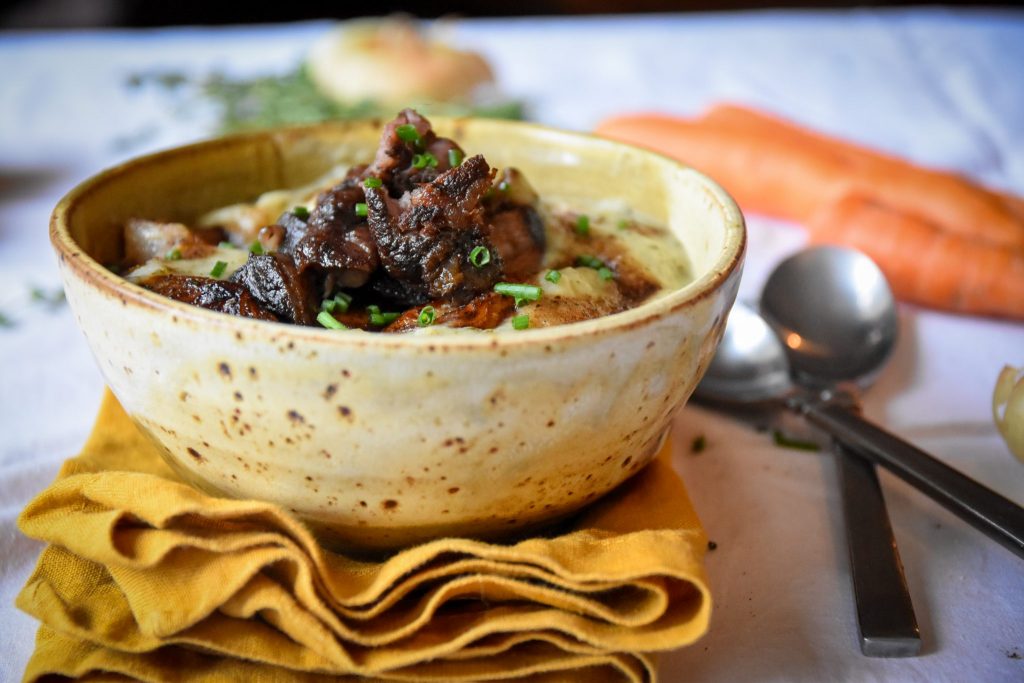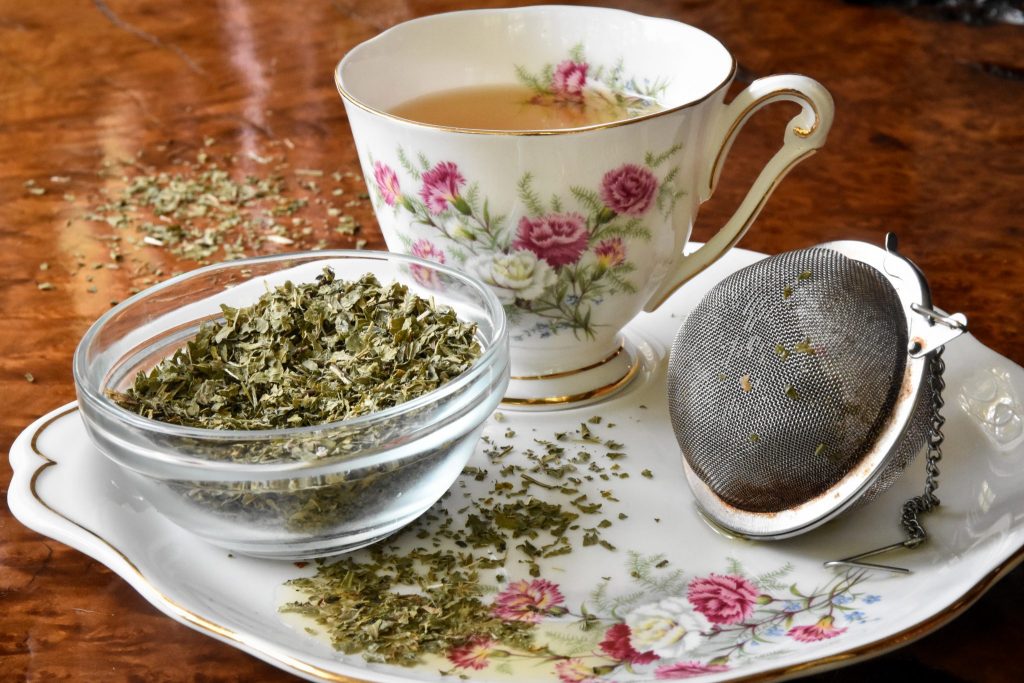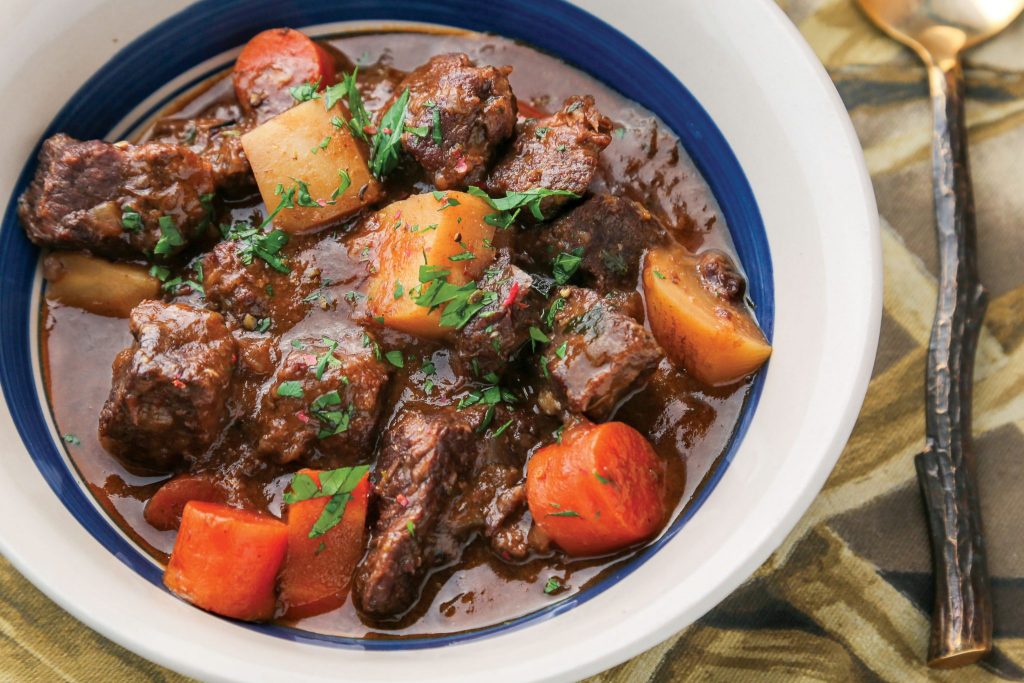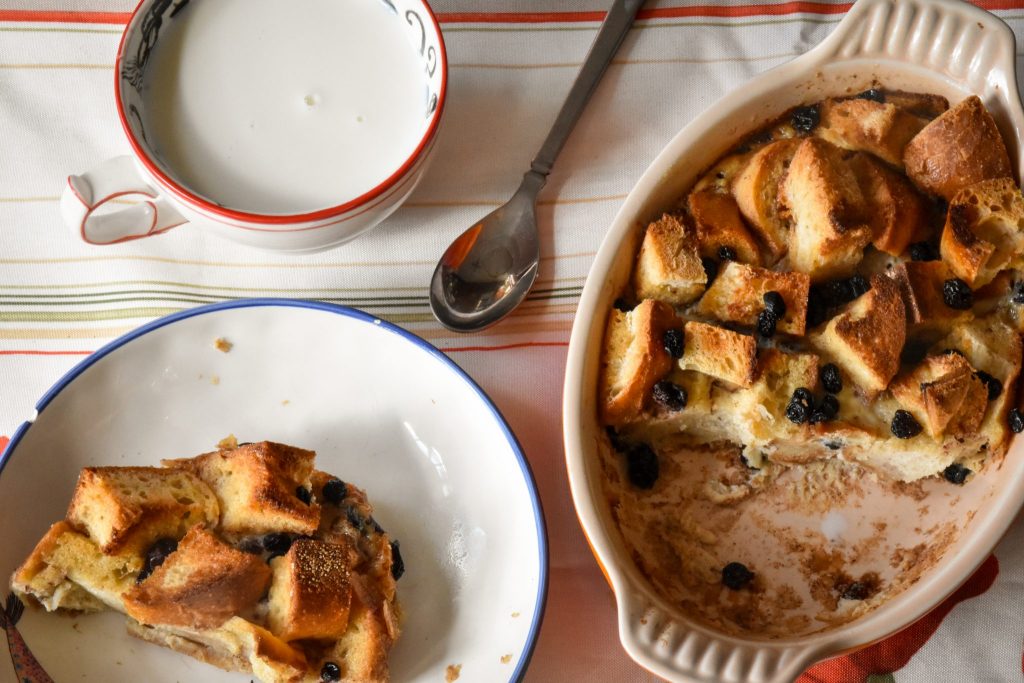Story and photos by Ryan Sparks
Enlarge

Story by Ryan Sparks
Winter is a time for reflection, and if you’ve been following along with the Nebraska Table you have a lot to reflect on. You’ve foraged morel mushrooms and stinging nettles. You’ve watched the sunset from a deer stand. You’ve felt the rush of a covey of quail as they burst from a fencerow. The best meals capture these moments. They contain the essence of a place, and each bite is made sweeter from the memory of how it ended up on your plate. It connects you to the land and gives you a better understanding of Nebraska.
Clayton Chapman of Omaha’s The Grey Plume restaurant has spent a lifetime working with and exploring the flavors of our region. No other chef offers such a striking and emotional representation of Nebraska. The menu at the Grey Plume is always in flux and demonstrates Chapman’s nuanced understanding of seasonality. If you’ve cooked any of Chapman’s recipes from the previous three installments, you know exactly what I’m talking about. I was happy to interview him and learn about his approach to working with local ingredients and producers.
How did you first become interested in working with local food and ingredients?
I was looking for a way to reconnect, explore and evolve the way I was cooking. There was a growing realization from those first interactions with local farmers and growers that the ideals of “local food” encompassed so many of my own personal beliefs and attitudes. I enjoyed the fact that there was a mutual curiosity between the farmer and the chef. I was drawn to the challenge of sourcing and cooking with the seasons and creating a menu that highlighted such thoughtful collaborations. Opening The Grey Plume rooted in the philosophies of sustainability and stewardship felt like the most natural next step for me. These have become the cornerstone of how and why I cook.
What are the benefits of working with local foods?
Working with local food presents the opportunity to align ourselves with the state in a different way. It can provide a shift in perspective. A different perspective not only through a deeper understanding of where and how our food is being produced or how we can support our local economy, but it also can cause a shift that translates through the ways we want to engage and participate with each other. We live in a world of such disconnect, and it sometimes feels like we are moving further and further from the source and authenticity of many things. Working with local food evokes meaning and it’s a powerful way we can connect to our land, culture and community. Whatever you buy “local,” it always has a story behind it and these food stories can help us to connect, relate and learn from each other. Isn’t that at the heart of sharing a meal?
What are local ingredients that home cooks overlook?
Two ingredients come to mind: 1) Stinging nettles can almost be found everywhere in Nebraska and they are really versatile. You can braise them like collard greens, wilt them like a spinach, wash repeatedly in cold water for use in a salad, make tea, and soups. 2) Paw-paw is the midwestern version of a tropical fruit. Native to Nebraska, the paw-paw tree grows in southeastern Nebraska and its fruit has a very short harvesting time, ripening in September or early October. It has a creamy flesh with big seeds and it tastes of pineapple and bubblegum. It’s delicious as an ice cream or custard.
What is a year-round staple in your pantry?
Our house-churned butter is something we are never without. We are fortunate to partner with Nebraska dairies to bring us delicious cream that we culture, churn and squeeze by hand.
How do you handle Nebraska’s long winter?
Canning, pickling and preserving. We dedicate a lot of time in the summer and fall toward capturing Nebraska fruits and vegetables in the height of their season. If they grow it, we jar it and then reach for it to brighten up our winter menus. So much so, we opened Provisions in the fall of 2014; offering our house made preserved items, cured meats and coffee in an everyday retail format.
What is the biggest misconception about the local food movement?
Eating “local” and the “farm to table” concept may have started out as a food trend but the momentum has grown and it’s not going away. There is an awareness and a consciousness that is out there now and it’s created a powerful level of accountability for our food producers, grocers and chefs that wasn’t there before. More and more consumers are looking for local food options and are expecting to see it on the shelves and menus. We have a tendency to limit the scope and power of local food. Its reach and representation goes far beyond local farmers markets. It’s changing the way we think about agriculture, conservation, nutrition and policies that define our city, state and country.
How has your experience sourcing local ingredients and working with Nebraska farmers influenced your understanding of Nebraska’s landscape?
It’s gratifying on many levels to be able to witness and explore the passionate ways Nebraskans are producing food. I’ve been able to spend time with ranchers in the Sandhills and the Niobrara River Valley and have had daily interactions with Omaha’s urban farmers. Nebraska has this special duality of rural and urban farming and I think it’s probably one of our greatest assets. Every producer and grower is dealing with a unique set of challenges depending upon where they are. Among those I’ve worked with is a strong willingness to collaborate to evolve our food system in Nebraska. It’s a willingness that’s grounded not only in the ideals of preservation but also innovation.
You will find chef Chapman’s recipe for Honey Creek Farm’s potato soup in the following recipes. Also featured is nettle tea from Abigael Birrel, former executive chef at Lincoln’s Hub Café, as well as Jenny Nguyen-Wheatley’s elk stew and Jane Sparks’ bread pudding.
I hope you have enjoyed the recipes featured in the Nebraska Table, but even more, I hope you have discovered a new passion and developed a better understanding of Nebraska. Nebraska is full of flavors and experiences that can’t be purchased at a store. You have to get outside, explore and find them. ■
Honey Creek Farm’s Potato Soup

Many of us know how cold a Nebraska winter can be – some years are colder than others and some years are brutally cold. Growing up in this wonderful state, I remember my mother making potato soup every winter. The soup usually consisted of a beef broth made from the roast beef from the night before, roast beef trimmings and a ton of potatoes with carrots, onions and anything else that was in the fridge. This recipe is a homage to that soup, but in a different variation. Instead of using a broth base, the soup is buttermilk and potato-based. The blood orange adds a nice brightness of acidity, and the oxtail is a nice variation of the roast beef I remember eating as a child.
Honey Creek Farm in Hancock, Iowa, produces amazing potatoes for us year-round. The recipe is suitable for a wide variety of potatoes, so please use what you have in your kitchen. Rhizosphere Farm is in Bennington, and we are fortunate that Matt and Terra are able to produce onions for us into the winter season.
La Vigne Organics is a Certified Bio Dynamic and Certified Organic citrus farm in Fallbrook, California, where Helene Beck produces phenomenal citrus for us. But like with any seasonal produce, things change with the seasons. The blood orange in this recipe can be substituted with any type of orange, but blood oranges are in high season on the West Coast during our Nebraska winters.
Mark and Jill Schmitz own and operate Majinola Farm or Majinola Ranch, a small wagyu cattle ranch in Panama, Iowa. We are thrilled to work with them as our only beef provider at the restaurant.
Servings: 2 large servings or 8 small portions
Prep Time: 1 hour
Cook Time: 13 hours
Potato Soup
Ingredients:
• 3 pounds heirloom potatoes, peeled and cut into 1-inch pieces (We use Yukon gold at the restaurant.)
• 2 cups Burbach’s Dairy whole milk
• 2 cups buttermilk
• 1 yellow or white onion, julienned
• 3 sprigs fresh thyme
• 4 ounces spinach
• 4 ounces George Paul red wine vinegar
• Kosher salt, to taste
• Fresh cracked pepper, to taste
Place peeled, cut potatoes and onions into a pot with the milk. Add thyme sprigs and season with salt and pepper. Cook the potatoes on medium heat until they are tender and add the buttermilk. Continue to cook the potatoes until they are at a mashed-potato-like consistency. Remove the thyme sprigs and add spinach to the potato mix, then place in blender. Blend the potatoes until smooth. If you like a thicker, chunkier soup you can leave the soup as is, once partially pureed. If you would like a completely smooth soup, pass the blended soup through a fine mesh sieve to alleviate any chunks of unblended potato. Season to taste with salt and pepper and add the George Paul vinegar.
Cipollini Onion
Ingredients:
• 4 cipollini onions, peeled and cut in half with the root end still intact
• 1 ounce neutral cooking oil
• 1 ounce whole unsalted butter
• Kosher salt, to taste
• Fresh cracked black pepper, to taste
• 1 sprig fresh thyme sprig
• ½ ounce George Paul red wine vinegar
• ¼ ounce fresh chives or parsley, minced
Heat oil in pan and add cipollini onions. Sear the onions on medium heat until they get a nice crust on one side. Strain oil out of pan and add butter, thyme sprig, salt and pepper. Continue to sauté the onions until butter foams and then add about 1 ounce of cold water. Reduce until the water evaporates and add the vinegar. Season to taste again with salt and pepper. Add chives or parsley.
La Vigne Organics Blood Orange
Ingredients:
• 2 blood oranges, segmented and zested
Zest the orange. Cut off the top and bottom of the orange so that it stands on one end without rolling. Underneath the skin (that you segmented) there will be a layer of white pith followed by the dark red color of the orange. You want to cut down to the orange. After the top and bottom are removed and the color of the orange is exposed, start cutting down the sides of the orange to expose the whole fruit. Discard the pith. You will be left with your whole fruit, zest and pith removed. Using your paring knife, cut out the individual segments of the fruit. These are the small pieces of fruit between each of the membranes. After segmenting all the fruit, set aside along with the zest for later use.
Majinola Farm’s Wagyu Beef Oxtail
Ingredients:
• 1 oxtail, cut into 2-inch sections
• 2 cups red wine
• 1 cup carrots, peeled and cut into ½ -inch dice
• 2 cups onion, peeled and cut into ½ -inch dice
• 1 cup celery, cut into ½-inch dice
• 1 bay leaf, fresh or dried
• 3 sprigs fresh thyme
• 24 ounces beef stock/beef broth
• 2 ounces neutral cooking oil
• Kosher salt, to taste
• Fresh cracked black pepper, to taste
Pour the wine over the oxtail and marinate overnight. Once oxtail pieces have marinated, pull from the marinating liquid (reserve the marinating liquid) and pat dry with paper towels. Season the oxtail with salt and pepper. Heat a sauté pan/large rondoux on the stove with medium heat and add the neutral cooking oil. Sear the oxtail until golden on all sides and place the oxtail in a baking dish. In the pan that the oxtail was seared in, add all of the carrots, onions, celery and sauté until you develop a nice dark color on the exterior of the vegetable. Once vegetables are sautéed add the red wine, beef broth and bay leaf to the pot and bring to a boil. Pour liquid over the oxtail and bake in a 250-degree oven for about 12 hours or until the oxtail meat comes off the bone easily. Reduce the cooking liquid by ¾. Pull the meat off the bone and fold in the reduced cooking liquid, chives and blood orange zest (from above).
To assemble: In the bottom of the bowl, place a small pile of the braised oxtail, two cippolini onions and 3 blood orange segments. When ready to serve, pour the hot soup over the top.
Nettle Tea

Chef Birrell sings the praises of wild nettles. Her spring contribution featured a forged nettle pesto where she suggested drying additional nettles to make an earthy tea during the winter. If you didn’t manage to pick any nettles or simply forgot to dry some, dried nettles can be found in many health food stores. Besides being a welcomed taste of summer, nettle tea is known for its numerous health benefits.
Servings: 1
Prep Time: 1 minute
Cook Time: 3 minutes
Ingredients:
• 1 teaspoon dried nettle leaves
• Dash of honey (optional)
Place the dried nettles in a tea ball and steep in boiling water for three minutes.
Elk, Parsnip and Turnip Stew

Servings: 4-6
Prep Time: 15 minutes
Cooking Time: 3 hours
Ingredients:
• 3 pounds elk (or deer) stew meat, do not remove silver skin
• Salt and pepper to taste
• 5 tablespoons flour
• 1 onion, chopped
• Cooking oil
• 3 ribs of celery, cut into large sections
• 1 bay leaf
• 1 teaspoon dried rosemary or fresh leaves, chopped
• 1½ cups dry red wine
• 2 tablespoons tomato paste
• 5 garlic cloves, smashed
• 2 quarts unsalted/low sodium elk or beef stock
• 2 large carrots, chopped into large pieces
• 2 parsnips, peeled and chopped into large pieces
• 2 turnips, chopped into large pieces
• Flat leaf parsley for garnish
Preheat oven to 350 degrees Fahrenheit. Pat elk meat dry with paper towels and toss with salt and pepper to taste in a bowl. Then toss with the flour. In a Dutch oven, coat the bottom with oil and heat over medium-high. Shake off excess flour from elk meat and add meat to the hot oil (in batches) and brown to form a nice crust. Set remaining flour aside for a later step. Remove browned meat and set aside.
Add more oil to the pot. Add chopped onion, pinch of salt, bay leaf, rosemary and celery and sauté until onion turns translucent; lower heat if necessary to avoid burning. Next, add the tomato paste, remaining flour from step 1 and garlic, and sauté for 1 minute.
Add wine and scrape the bottom of the pot with a wooden spoon to release brown bits. Allow wine to simmer and reduce by one quarter. Return browned elk stew meat to the pot and pour in elk or beef stock. Stir and bring to a low boil.
Take off heat. Cover the opening of the pot with foil, and then place the lid on top – the foil helps to slow down moisture loss. Cook in a 350-degree oven for about 1 hour and 30 minutes. Then discard the foil and add the carrots, parsnips and turnips and continue to cook covered for another 30-45 minutes until meat and vegetables become tender. Taste for seasoning and garnish with freshly chopped parsley. Serve with crusty bread. This stew tastes better the day after.
Bread Pudding

This simple and hearty bread pudding is wonderful on a cold winter night. It’s also a delicious way to use stale bread. This has been a fixture in our family for generations. It’s delicious as is, but adding a scoop of vanilla ice cream, a splash of cream, or a dash of brandy doesn’t hurt.
Servings: 6
Prep Time: 10 minutes
Cook Time: Approximately 1 hour
Ingredients:
• 1-3 tablespoons butter
• 6 cups cubed bread (approximately 1 inch)
• 1⁄3 cup raisins
• 2 eggs
• 1⁄3 cup sugar
• ¼ teaspoon cinnamon
• ¼ teaspoon salt
• 1 teaspoon vanilla extract
• 2 cups whole milk
Preheat the oven to 350 F.
Combine the raisins with the bread cubes and spread them evenly in a lightly buttered casserole dish.
Combine eggs, sugar, salt, cinnamon, vanilla, and milk and pour the mixture over the bread cubes.
Place the casserole dish in the oven, uncovered, along with a baking dish filled with water. This helps keep the pudding moist.
Bake for one hour or until the top is nicely browned.
The post The Nebraska Table: Winter Recipes appeared first on NEBRASKALand Magazine.
















